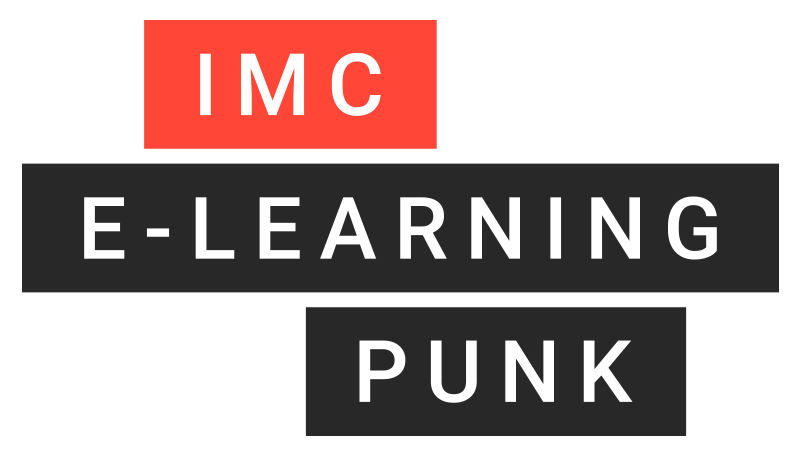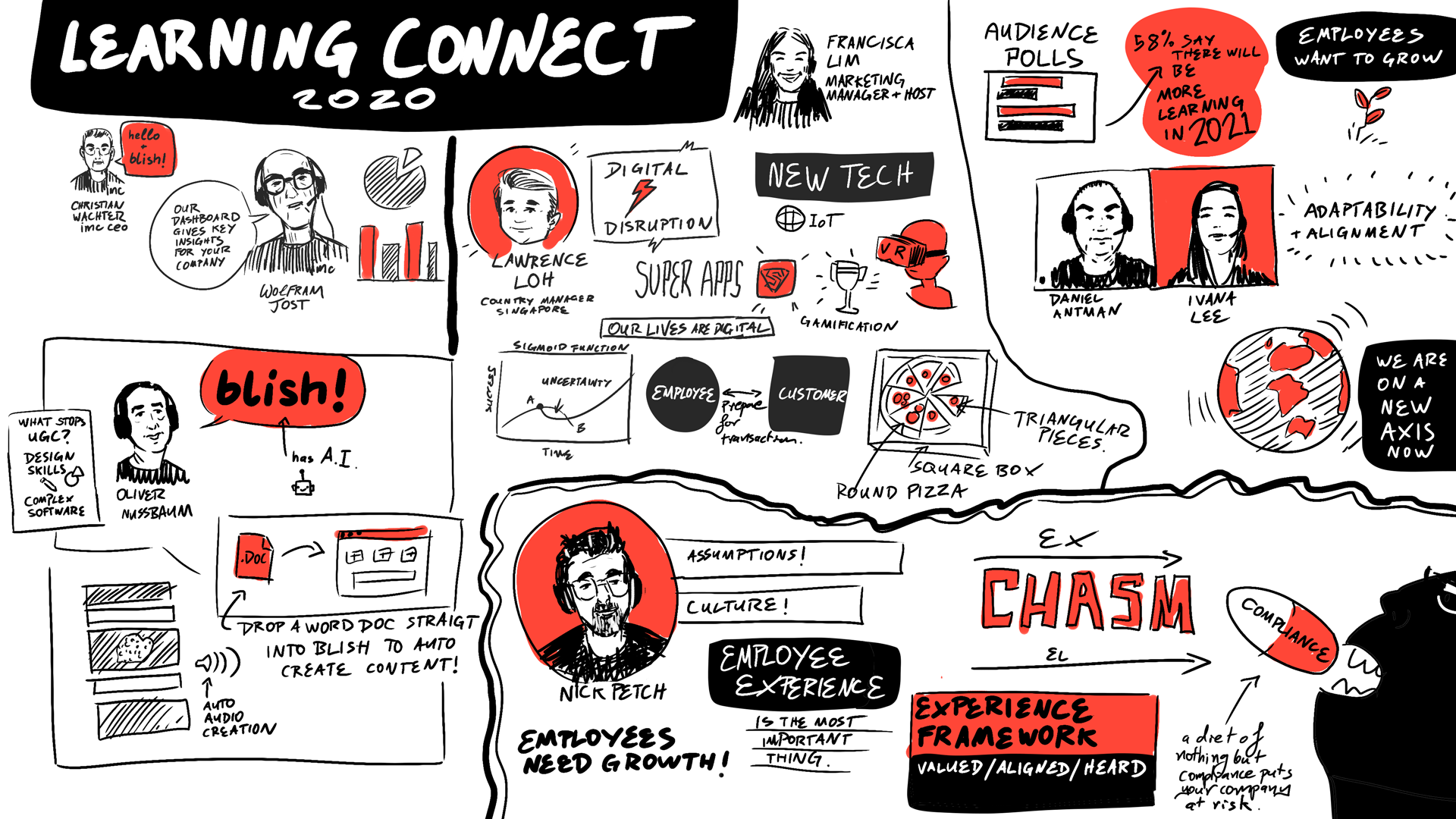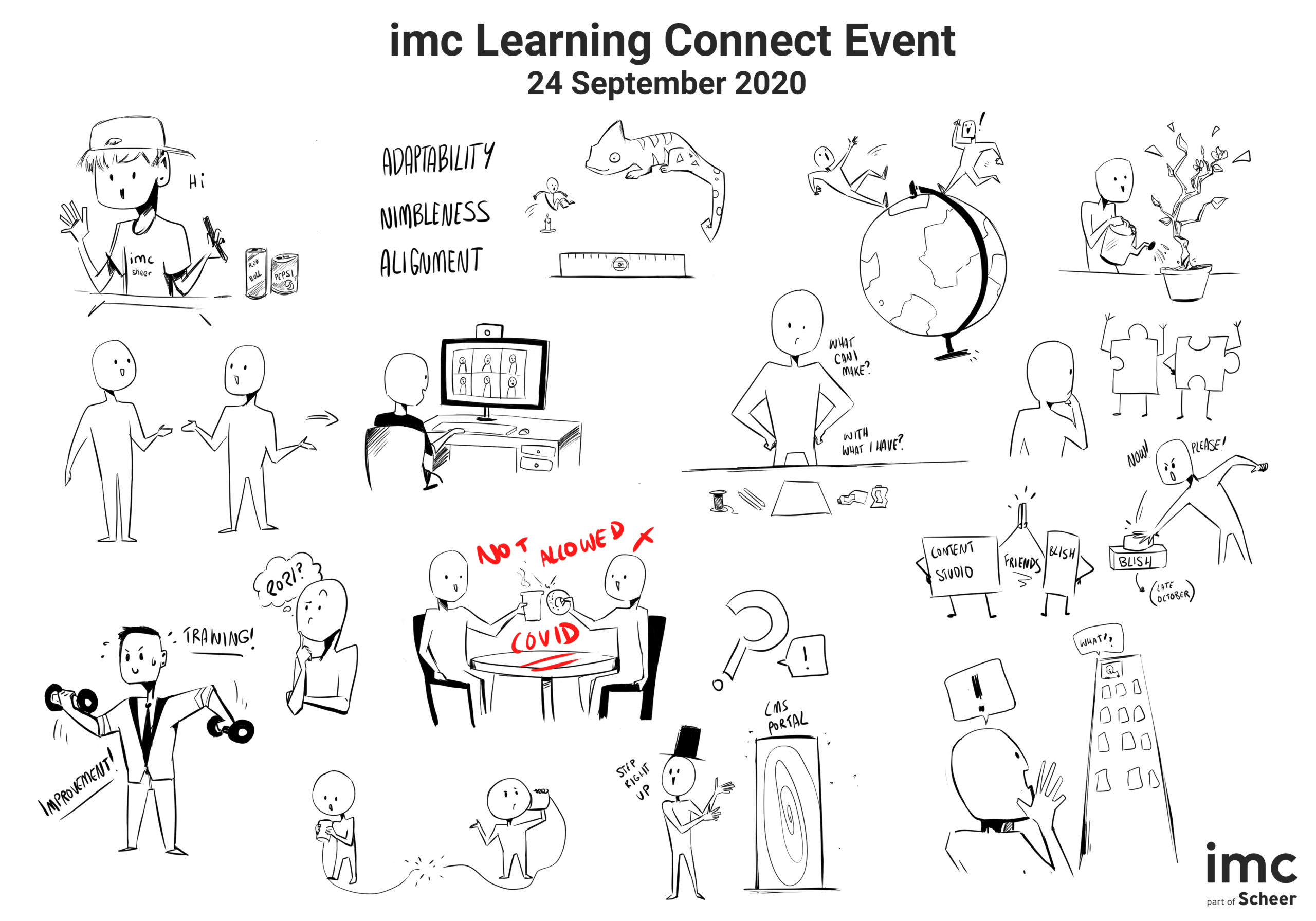
Multi-tenancy LMS solutions
Here we look at multi-tenancy LMS solutions, including a definition, the types of organisations that leverage them, and how imc can help clients to maximise their effectiveness to deliver training across diverse groups of learners.
What is multi-tenancy?
In the field of software, the term multi-tenancy refers to a single application shared by multiple user groups who each experience their own, individualised working environment.
Each ‘tenant’ is a group of users that shares certain common features with other tenants, but that may have certain design elements, layouts and privileges that are unique to their group.
A useful analogy is a block of flats. The building has a shared entrance, lifts and stairways, but each tenant has their own, self-contained flat. The tenant can choose their own appliances, furniture and interior design / decor.
What is a multi-tenancy LMS?
A multi-tenancy LMS is a single learning management system instance that serves various learner groups with differing training needs. This may take a range of potential forms, depending on your organisational needs, and could include:
- Different departments across a large organisation - for example, you may have separate learning environments for Sales and Manufacturing teams because their training needs are so different
- Local offices across different locations - even multiple countries, allowing localisation or translation of training content
- External partners - you can create tailored learning platforms for groups outside your own organisation, including suppliers, distributors and channel sales partners. This type of partner training is known as Extended Enterprise Learning.
- A specialist training company, delivering any number of client-branded learning environments, or even using ecommerce to sell courses online.
Your organisation-wide L&D team can control what content and features are rolled out to all tenants, and what is managed within each individual group.

Benefits of a multi-tenant LMS
The benefits of multi-tenant LMS vs a standard learning platform are numerous, but the overarching themes are efficiency and flexibility. Here are some of the elements that L&D managers and business leaders are looking to achieve when they choose multi-tenancy:
Cost reduction
When you need to segment the learning experience across departments, it has been common in the past for each one to have their own LMS. A multi-tenancy LMS offers economies of scale and allows each department to share the cost of the core platform and any common content, features, and system upgrades.
Knowledge and resource sharing
When every department operates in completely distinct silos, there is less functionality and visibility between them to facilitate resource and knowledge sharing. If something works for / is created within one department, a multi-tenant LMS makes it easy for the central administration team to share it across more or all departments.
Departmental and centralised analytics
With multi-tenancy, you can drill into course and learner analytics at the departmental and group-wide level. This can help you to identify and address training needs and weaknesses among certain types of user. It also helps you avoid overall learner data getting skewed by one or two outlier groups.
Speed of implementation
When something changes that affects several or all of your teams, it can be much faster to roll out from central management if they can influence all of those learning management systems in one hit.
For example, new legislation like GDPR could affect all departments, so managing relevant training from a central location, while allowing it to be customised if and where needed, can greatly quicken roll out.
Brandability
Whatever the training needs of a certain learner cohort, a multi-brand LMS enables each group to make their LMS feel like home.
Whether it’s for external clients to have their own company branding or internal teams who just want to customise it to their preferred style, a branded LMS can enhance user acceptance and in turn, improve compliance, engagement and learning outcomes.

Why an imc learning management system?
Founded in Germany, imc is one of the world’s leading elearning and LMS providers, with offices and clients across the globe. With a diverse, international presence, we understand the needs of companies that need to train dispersed and diverse audiences. We combine some of the sharpest technology minds with deep experience within L&D.
imc is trusted by well-known brands, including Vodafone, Deloitte, Sky, Daimler, BASF and many more to deliver on their elearning needs.
Many of our clients benefit from our ability to create and deliver powerful multi-tenancy solutions that work equally well in multiple languages, offline or online, on desktop or mobile.
With a huge, unique array of integrations made possible via APIs, we can help you to create a learning ecosystem that plays nicely with your existing training, HR, sales and other business systems. This allows you to plug seamlessly into 3rd party tools like Workday, Adobe, SAP, YouTube, Salesforce, and even ecommerce gateways like PayPal and Shopify if you want to sell elearning courses.
Whatever your internal staff or external partner training needs, imc can help you to create a multi-tenancy LMS solution to power your current and future learning.

How to train external audiences
It’s no secret that your internal team is your organisation’s greatest asset. However, you should bear in mind that it isn’t your only asset.

Business growth through L&D
Data suggests that when organisations spend USD 1,500 per employee per year on learning, they achieve improvements in profit margins of around 24%.
Contact
As imc has over 20 years of experience working with 1,200+ organisations globally, we can confidently say we have seen and solved many business challenges just like the ones you are facing today.
That’s why we would love to learn more about your situation and to give you some tailored, expert advice to solve the obstacles that you are facing.
Feel free to connect with Tracey for a free consultation call.


Digital Learning Journey: I am packing my suitcase. What I take along...
The key items one should never forget on a digital learning journey
Dear E-Learning Punk friends, one year of corona, one year without a holiday. Do you remember back when it was possible to travel the world with ease?
Cocktail in one hand, a good book in the other. Feet in the sand, sun on your face, looking at the roaring sea. That’s how many of us remember the perfect holiday. But there are many other ways to travel: From city breaks through backpacking tours to cruises, there’s something for everyone. The same applies to a learning journey.
What exactly do you need to pay attention to when planning, preparing and going on this journey? Over a nice cocktail, we asked travel guide and expert Eva Lettenbauer to offer some tips and hand you a checklist.

Planning a learning journey – What’s the destination?
Am I going on to explore far-flung places, or do I return to the little finca at the edge of the fishing village in Mallorca? We often go into holiday mode as soon as we start planning our trip. But we do have to decide on the destination.
Similarly, we need to figure out what digital training is meant to achieve for the company. What corporate goals is the training geared towards? What performance goals are being pursued? What exactly do we want to bring across? Should the training focus on background knowledge? Practical application? Sharing experiences? The more clearly you can define where you want to go with this journey, the more effectively you can leverage the different learning formats.

Everyone goes at their own pace on holiday. One person might want to see all of Paris in a day, while the next person would rather watch the hustle and bustle while sitting in a street café in Montmartre. But in the end, both want to take a picture in front of the Eiffel tower.
Defining the goals – the destination – and the contents of a training course is crucial for the success of a learning journey, but so is taking account of the actual learners. They are the target group the learning offers need to be tailored to. If employee requirements are met, they learn more efficiently and learning success is achieved more effectively. Learners should be enabled to close their knowledge gaps to the best of their abilities and learn at their own pace.
Packing the suitcase – What are the essentials?
Finally, the time has come! A quick check to see if last year’s bikini still fits and the sunscreen hasn’t hardened up. Now to the evening outfits – What can I wear when it gets cooler at night? Hang on. Does it even cool down in Bali?
Packing the right stuff for my destination is important. The same applies to training objectives: Each format is suitable for a range of contents and has its own advantages. Virtual classrooms are great for exchanging ideas, while web-based training helps participants to learn theoretical content at their own pace. By packing the right formats, you create a learning journey. This also opens up the opportunity to create small, digestible learning nuggets that are easy to integrate into day-to-day work.

Shoes, clothes, cosmetics, books and, of course, my sunglasses land in my suitcase.
For a learning journey that means the individual modules are defined. You might pack a virtual classroom, game-based learning, on-the-job challenges, social learning, quizzes and fill each with suitable content.
For imc customers, Eva Lettenbauer handles that part. She is a specialist for learning experience design at imc and turns contents into learning content. Above all, the learning journeys she thus creates motivate and aim to activate the learners.
“You want to capitalise on the strengths of each format and cater to different requirements and levels,” says Eva. “Depending on the level, advanced employees might even skip simpler topics. The better the modular system, the more flexible it is, allowing you to tailor it to the specific demands of each learner.”

Let the journey begin
Finally arrived and checked in. A quick look around the hotel, then I’ll see what I can reach on foot. Each journey has different stages. I need to get my bearings before I party in the best club in town with the locals without sticking out as a tourist. ¿Quién sabe? Maybe I even speak a few words of Spanish by the end of my trip?
The learning journey also goes through different stages. First, the learner needs to find their way around. A brief introduction helps to set the tone for the topic and motivate the learner. Then, the theoretical foundation is created as the necessary knowledge is gained. In the next step, the learned material is applied – on-the-job challenges, job aids, tests in quiz format and, of course, social learning can be leveraged to achieve this stage goal. Finally, it all has to be internalised to reach the end of the journey. From this point onwards, the learner can also act as a mentor and support others in their development.

Checklist
The best thing about the travel guide I used for my last holiday was the checklist for must-do sights and experiences in the city. To equally help your digital learning journey become a resounding success, we offer this checklist:
- Define objectives and content
- Distribute content across suitable formats
- Introduce the learner to the training and motivate them
- Create a theoretical foundation
- Apply the knowledge on the job
- Establish an active, self-directed learning culture
Now, we are just as excited about learning journeys as we are about travelling.
Of course, you won’t have to wait long for the next edition of E-Learning Punk, either. We will be all be about the intriguing topic of gamification.
... and if you’re still looking for the right holiday read: We’ve got that covered as well.
![[E-Learning Punk] Exploratory 3D Learning](https://images.im-c.com/wp-content/uploads/2021/02/imc_image_elearningpunk_3Dlearning_hero.jpg)
Exploratory 3D Learning
Not only movies like “Avatar”, but also learning content can benefit from spatially compelling images. We explain the advantages of this professional development trend and present you application scenarios for 3D learning.

Immersive Learning during the Crisis
Immersion is one of the most successful learning methods. Jennifer Fritz, VR expert, points out the potential benefits of using Virtual Reality especially during this unprecedented times.

Contact person
I joined the imc newsroom team in 2021. As a journalist my heart beats for content and storytelling.
I’m excited to figure out how e-learing and digitization affect the future of work. My task is to create content to talk about and I’m always looking for trends.
Privately I love to travel and eat Tapas.
Topics: E-Learning Trends, Corporate Social Responsibility, Press and Influencer Relations

Learning and connection for the future
What companies should consider in 2021 – part 2

Sketchnote by Adam van Winden, imc
Less staff fluctuation by considering employee experience
Redesigning organisations’ employee experience was the focus in Nick Petch’s session. Nick, who heads the Digital Learning Experience & Design Strategy team, pointed out that employee experience is a powerful way to improve organisational learning and, ultimately, the future of performance.
But not many organisations consider employee experience as an essential aspect in the learning and development process. And employee experience isn't just about creating a great experience, it's about establishing a culture and identity of learning and development that is fundamental for an organisation's success.
Every step in the employee journey from onboarding, induction and development will influence an employee’s perspective towards the organisation. When organisations don't design each of these steps carefully, employees will feel that they are not valued, which will lower staff retention rates.
Experience or designing for experience is a systemic design challenge and not a single event. Developing an experience framework represents the very first step of an employee experience.
Platforms should work for the user – not vice versa
The panel discussion with Daniel Antman, Managing Director Australia and Ivana Lee, Managing Director Asia, was about measuring results of learning and development objectives. Both agreed that creating meaningful content, where the platform works for the learners rather than the other way around, is vital to ensure that learners can feel the benefit of a Learning Management System (LMS).
In the session, the speakers also pointed out that things are not going back to normal. Adaptability, nimbleness and alignment are the steps that need to be implemented by organisations to stay competitive. For organisations that see themselves as genuine learning businesses, and who are committed to developing and growing their teams, their time has come. They are embracing the technologies that will enable them to deliver learning that is valued by those seeking the development, support and care from businesses committed to them.
Training is not the same as development!
Within the discussion, the presenters also answered thoughtful questions from participants. Questions came across on topics like:
- when to start redesigning the employee experience
- how to prepare the workforce with the right skills in the current situation
- the availability of imc Express
Concerning imc Express, which will be rolled out in 2021, the speakers emphasised that this tool will not replace imc Content studio.
Besides this, there was a question if learning analytic dashboard is a part of LMS. However, this is not the case. Learning Analytics dashboard will be a separate component; it will extract the data from LMS and the business data to produce the result.
The difference between training and development was also raised. This was explained as training is a set of programs defined by an organisation and development being much more an entrepreneurialistic, where people are motivated to learn and to improve by themselves.
Participants polls
Participants had the option to vote in several surveys. The result:
- 50% of the audience were excited with the upcoming challenges in 2021.
- 41% expect that organisations will be doing more learning and development in 2021.
- 58% think that their organisations learning and development objectives are aligned with the commercial or performance urgency.
We would like to thank all our customers, but also the whole organisational team for this great event and we hope to see you again next year - may it be in person or digital!

Further information
Click here to watch the recording of the Learning Connect Session.
Learn more about the Learning Management System imc Learning Suite.
Contact


Learning and connection for the future
What companies should consider in 2021 – part 1
How can organisations and employees survive the accelerating of the digital transformation? This is a global challenge that all industries are facing nowadays and which they can only handle by focusing on learning and training. Especially the last months has opened the eyes of CEO's, CHRO's and Heads of Learning to an even more significant opportunity for reskilling and retraining. Therefore, it’s essential to use the right platform to launch into future growth and to ensure staff retention.
These were the most important themes of imc Learning Connect industry event which was organised by imc Asia and took place virtually on 24 September 2020. We summarised the key facts of the event and which topics Learning and Development professionals, learning enthusiasts and digitalisation fans should have on their watch list for the upcoming year in two series of articles. This is the first of the series.

Sketchnote by Felix Macfarlane, imc
Redesigning employee experience
Christian Wachter, CEO of imc, opened the event and shared an outlook on the upcoming sessions. Among others, he talked about the importance for organisations to improve their learning strategy by utilising learning analytics dashboard. He also pointed out how to redesign employee experience to encourage lifelong learning and introduced imc’s new authoring tool called blish!. He closed his presentation with the hint, that technology is only a tool to transform organisations digitally; nevertheless, the input is much more critical to ensure effective utilisation.
Learning analytics and business outcome
In the maximise Learning Outcomes Session, imc board member Dr. Wolfram Jost discussed the importance of measuring the result of Learning and Development and how these will impact the business performance. With a learning analytics dashboard, organisations can see the link between the learning program and business key performance indicators.
Proving this connection can be a great support in convincing the management: When learning and development leaders could show the impact of their program, management shall be more convinced to invest in reskilling and retraining.
Digital transformation – but how?
How can digital learning support companies on their process of digital transformation? That was the topic of Lawrence Loh, Country Manager of imc Singapore. He pointed out that digital literacy, access and participation are essential to optimise organisations digital competency, as all these points influence future skills, business transformation and innovation as well as job profiles. Transferred to organisations, this means they have to prepare for the acceleration of digital led trends in order to optimise organisations digital competency.
Digital enterprise organisations will need to combine their processes, technology and people in the path towards digital transformation. To speed up this process will only be possible with digital learning and therefore a Learning Management System with a good user interface and user experience will enhance the learners' potential.
Creating learning content has never been that easy
User generated learning content is the topic in imc Express, an authoring tool session by Oliver Nussbaum. Everybody can produce a learning content since people has abundance knowledge they could share within their organisations. Functional understanding of software, awareness of good design and basic didactical knowledge are the skills required to be learning content producer. imc Express will support the creation of meaningful learning content with a strong Artificial Intelligence (AI); hence everybody could publish their knowledge.
That was part one of the event highlights, you can find the second part here!
Further information
You would like to learn more? Here you can find out more about the content authoring tool imc Express.
Or watch the event recording here.
Contact


Science fiction or near future?
28% of all new recruits quit within their trial period or even fail to turn up on their first day of work. Moreover, employees who receive poor induction are twice as likely to leave as employees who go through an effective onboarding process.
These figures by Haufe should alarm companies: Faced with the ongoing “War of Talents”, new hires are extremely time consuming and costly. Yet, a well-designed onboarding concept can be integrated directly into the existing learning management system (LMS).
To many LMS managers, some of the options available today sound like science fiction. That’s why we embarked on some onboarding time travel into the near future to experience what onboarding might look like.
The first few weeks are crucial for making new colleagues feel welcome in the organisation and helping them become part of the team, as this is the foundation for long-term company loyalty. This requires both empathy and clear onboarding processes. Even larger organisations with existing learning management systems that would provide an optimal infrastructure for efficient onboarding design are often unaware of the opportunities available.
This is why we are following our fictitious employee Hanna in this article to get a glimpse of her slightly different onboarding experience ...

Hanna is excited. She just signed the contract for her new job. She is leaving the big bank where she had been involved in investment advisory services for several years and completed many professional development courses. While most of these followed the traditional face-to-face format, some were delivered online – and often bored her to death.
She will handle similar tasks in her new job with her new employer and fears that she will have to chew through the same dull content all over again. After all, that’s what happened the last time she changed jobs. She lets out a sigh at the mere thought at yet another bog-standard first aid course. Hanna has been a certified first aider and fire protection assistant for years.
Exactly two weeks before her first day at work, a friendly email lands in Hanna’s inbox, asking her to join her new employer’s in-house learning management system. She is quite unsure what to make of that. Surely, they are not expecting her to work already?
Curiosity gets the better of her – and she is in for a surprise. Instead of the expected work assignments, a chatbot welcomes her who resembles a cross between Wall-E and R2D2. The assistant introduces himself as Robby and gives Hanna a virtual tour of her new office, introduces the other team members with a picture, and shows her where they sit. He also reveals her future email address and the (mobile) devices she can expect to find on her desk on her first day.
He asks how she plans to travel to the office, and whether she prefers public transport, car or changing it up. She chooses “both” and promptly receives an overview of all connections and parking options. Robby also shows her who will be sitting at reception on her first day and issue her access card.
The little chatbot then explains which communication tools are used in the company and which other tools Hanna will be working with. She is given the option to take a closer look at these tools before starting her job, but is informed that her manager will personally show her how to use them all in her first week.
Robby ends his tour with the words: “We are looking forward to welcoming you soon. If you have any further questions, simply launch a chat and I will be happy to help you!”
The day of truth has arrived: The first day gets underway and Hanna is stumped. Armed with a smartphone, she is asked to team up with another colleague to complete some type of digital scavenger hunt through the company. When she passes certain offices, she receives a notification along the lines of: “Say Hi to Peter! Peter is responsible for your business trips and finances.”
In her new office, she meets the colleagues Robby had already introduced her to virtually, and she is asked to log into the learning management system from her workstation and complete a test. Instead of a typical mind-numbing multiple choice test, Robby greets her, guides her through the different departments and processes, and invites her to an interactive quiz. Even the training sessions on data protection, cyber security and first aid flow nicely.
When she states her qualifications as a first aider and fire protection assistant, she is asked to upload her certificate and given leave to skip all subsequent questions in this field. Robby also enquires directly whether he may add her as a first aider in the system. Hanna agrees.
The system also adapts to her current knowledge with the subsequent questions, and tailors them accordingly. When the program notices that Hanna already possesses sound knowledge in a field, it either asks more difficult questions or skips certain sections. At the end of the training session, Robby leaves her with the words: “Thank you for your support! I see you are already a real pro. I will adjust your onboarding plan and training accordingly.”
Indeed, Hanna learns only new contents in subsequent training sessions. She is asked to self-assess and is provided with a tailored concept aligned with her personal development goals. She is free to schedule her learning time at her leisure. Her superiors only set a deadline for completing all training units.
Even learning method and approach are tailored to her personal requirements. All training contents is available in various formats, and Hanna can select her preferred system. This involves no additional tests: The algorithm identifies the methods most suitable for Hanna based on the training units she has already completed, and suggests training units using a similar approach. If she doesn’t like them, she is free to switch to other formats at any time.
A few weeks into her job, Hanna suddenly stumbles on a question. She enters it on the intranet and is immediately referred to a matching training session. In addition to the specific training offer, she is also shown which colleagues could assist her with her query. Meanwhile, Hanna is shown as an expert for questions in her specialty areas.
Intuitive tools also let her create her own training sessions in minimal time. Templates are provided in the system, and she can choose between voice-to-text, typed entries, preparing presentations or creating diagrams. Content design is automated and the output is provided in a range of formats. Training is delivered in “learning nuggets”, that is smaller learning units no longer than three minutes each.
By now, Hanna’s profile is after three months filled with a wealth of information. She had already discussed the direction she would like her development to take with her manager in the initial weeks, and they identified the required competences and skills and how she can acquire them. In the next half year, she would like to further improve her English. She is also considering assuming technical management tasks.
To this end, she submitted her self-assessment which must be confirmed by her line manager. A skill profile based on this assessment was set up in the system, which shows target and actual scores. Every time Hanna creates or completes another training unit, the target score increases, and she can see which courses would help her achieve further improvements.
Hanna’s onboarding is complete after six months. She feels like she has arrived and is in good hands. Her line manager now sets up a meeting together with the head of her department. Hanna is slightly uneasy when she arrives for the meeting and wonders whether she had misjudged her achievement after all.
Instead, she finds out that a colleague in another department had unexpectedly handed in his notice. The skills match for the position showed that Hanna already met 80% of the job requirements. While she still needed training in employee management, her superiors are confident that she will master this quickly. Hanna accepts and is promoted after only half a year with the company.
...and in reality?
So far, so good. Which parts of this story are wishful thinking? Which aspects ring true in real life? No doubt, almost every scenario described is possible today - or will be very soon. Nevertheless, companies are only utilising a fraction of these options and opportunities. Creating a dedicated skills profile for each job, developing learning paths and linking these with competences or integrating learning on demand takes time. Yet, investing in these topics – also in combination with skills-based job profiles – and integrating them into the onboarding process pays off, especially when facing skills shortages.
We therefore hope that Hanna’s story leaves the realm of science fiction and becomes reality soon.
Our eBook on competency-based learning offers many helpful tips and, of course, we are happy to assist. Feel free to contact us directly on [email protected].

Courage to the LMS - even as SME!
Not only big companies should have the courage to go for a Learning Management System. In our interview Christian Mai from S&G Mercedes Benz, tells about his experiences with rolling out an LMS in a Small and Medium Enterprise (SME).

Convincing stakeholders for an LMS
The success of introducing an LMS hinges on those responsible for the launch - and not underestimating them. We have compiled some expert tips and a checklist to help you in convincing your stakeholders.

More information about the LMS
If you would like to find our more about the Learning Management System of imc, please find all information here.
Contact
I have been working in the Marketing & Communication Team at imc since March 2019.
Communication, creative content and social media are my passion. "KISS - Keep it short and simple" is my credo.
To explain complex content in an understandable way and thus make the topic of e-Learning accessible to everyone is an exciting challenge every day.
Privately I love to read, play poker and travel a lot.
I am always happy to receive feedback or suggestions.
